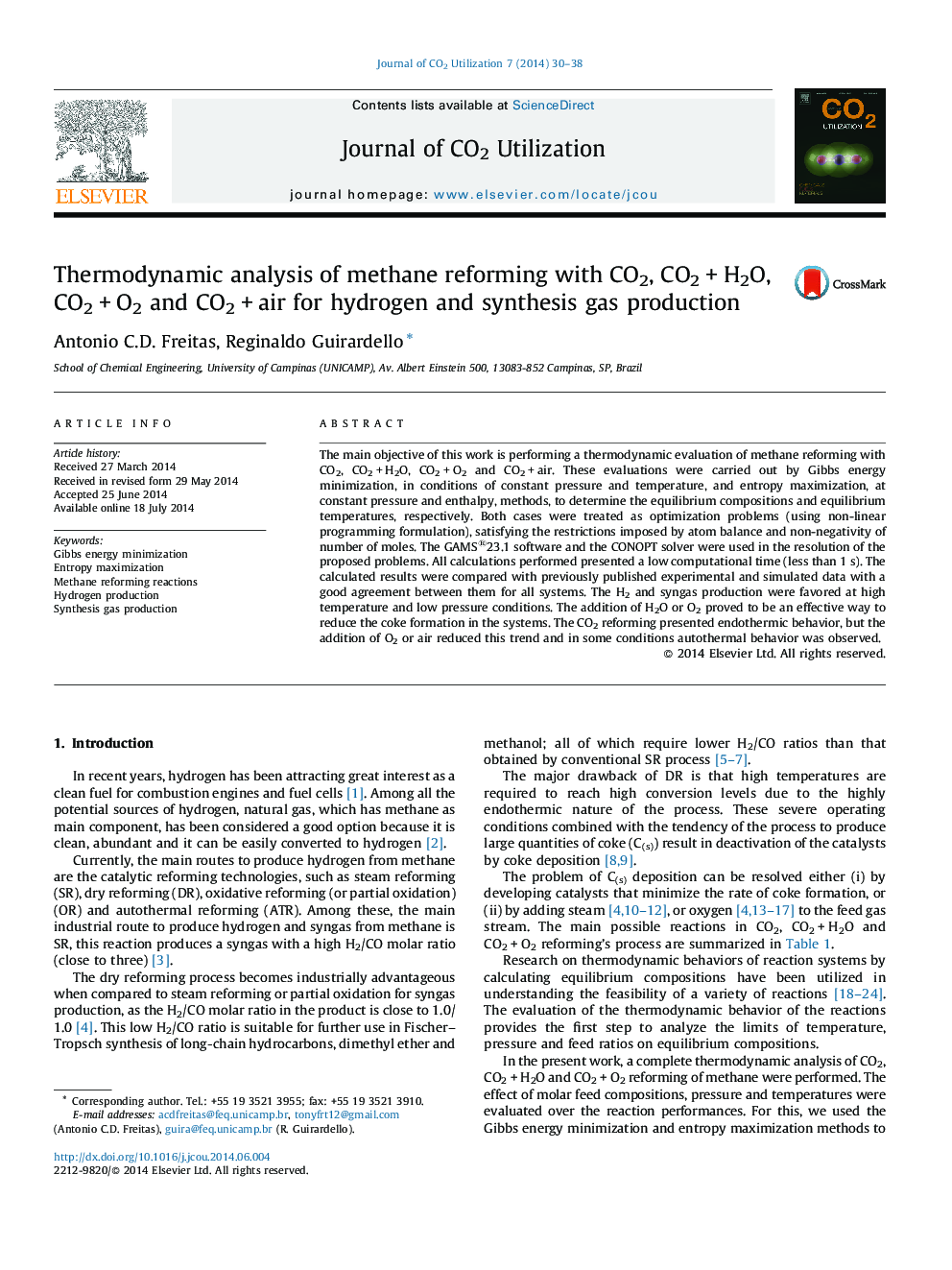| Article ID | Journal | Published Year | Pages | File Type |
|---|---|---|---|---|
| 63575 | Journal of CO2 Utilization | 2014 | 9 Pages |
•We performed the thermodynamic evaluation of different methane reforming reactions with CO2.•The effects of O2, H2O and air addition were discussed.•Gibbs energy minimization and entropy maximization methods were used to perform the calculations.•The model showed good predictive ability when compared with experimental and simulated data from literature with low computational time.
The main objective of this work is performing a thermodynamic evaluation of methane reforming with CO2, CO2 + H2O, CO2 + O2 and CO2 + air. These evaluations were carried out by Gibbs energy minimization, in conditions of constant pressure and temperature, and entropy maximization, at constant pressure and enthalpy, methods, to determine the equilibrium compositions and equilibrium temperatures, respectively. Both cases were treated as optimization problems (using non-linear programming formulation), satisfying the restrictions imposed by atom balance and non-negativity of number of moles. The GAMS®23.1 software and the CONOPT solver were used in the resolution of the proposed problems. All calculations performed presented a low computational time (less than 1 s). The calculated results were compared with previously published experimental and simulated data with a good agreement between them for all systems. The H2 and syngas production were favored at high temperature and low pressure conditions. The addition of H2O or O2 proved to be an effective way to reduce the coke formation in the systems. The CO2 reforming presented endothermic behavior, but the addition of O2 or air reduced this trend and in some conditions autothermal behavior was observed.
Graphical abstractFigure optionsDownload full-size imageDownload as PowerPoint slide
